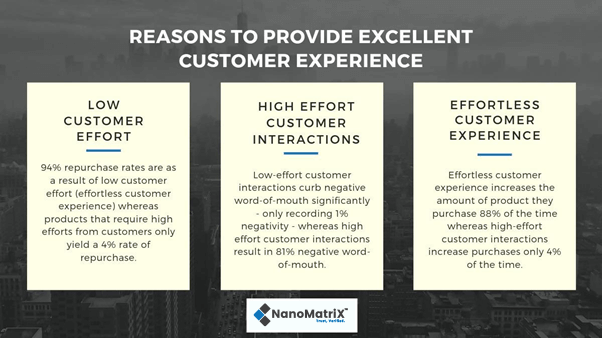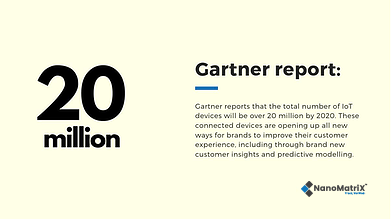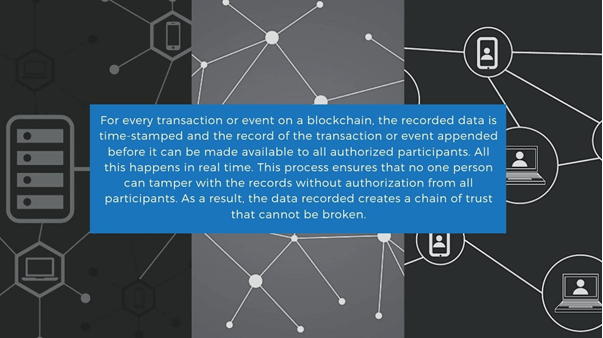The Future of Customer Engagement with Blockchain
At any one time, business enterprises are looking for new ways to better interact with their customers. The aim is to create a more convenient and personalized customer experiences. Today, a growing number of businesses are leveraging blockchain to improve customer engagement. Blockchain makes data management more systematic, allowing business leaders to make decisions using the most up to date data.
For every transaction or event on a blockchain, the recorded data is time-stamped and the record of the transaction or event appended before it can be made available to all authorized participants. All this happens in real time. This process ensures that no one person can tamper with the records without authorization from all participants. As a result, the data recorded creates a chain of trust that cannot be broken.
Therefore, blockchains become singular trusted truth sources shareable across an array of organizations. They introduce consensus and transparency and by extension ensure that all participants are accountable for every action they take, and that the contracts they’ve entered with other participants and with consumers are honored. It is for this reason that a growing number of consumer-focused organizations are embracing blockchain technology.
Blockchain becomes the trusted third party; it stores the identities of all participants and makes this information public, as well as logs previous activities associated with a transaction or event, including reputation scores, and reviews. This will become an even greater deal in the future as shared economy grows, and collaborative consumption becomes the order of the day.
As blockchain makes available reliable shared data about commercial events and transactions, a revolutionary solution beckons, for both businesses and customers. It will become easier for businesses to engage with customers from a place of trust, and for customers to access trustworthy information about the products they intend to buy.
Importance of Customer Engagement
According to available research, a fully engaged consumer brings in 23% more revenue than an averagely engaged one. Therefore, failing to engage with your customers is a sure way to miss opportunities. Different customer engagement strategies are necessary for different industries in different companies. All the same, whichever strategy you choose must incorporate clarity, simplicity and empathy towards your customers.
The following are three major reasons why every business should provide excellent customer experience:
- 94% repurchase rates are as a result of low customer effort (effortless customer experience) whereas products that require high efforts from customers only yield a 4% rate of repurchase.
- Low-effort customer interactions curb negative word-of-mouth significantly – only recording 1% negativity – whereas high effort customer interactions result in 81% negative word-of-mouth.
- Effortless customer experience increases the amount of product they purchase 88% of the time whereas high-effort customer interactions increase purchases only 4% of the time.
Excellent customer engagement:
-
Builds trust
-
Improves communication
-
Gives a company valuable insights into its customers
-
Fosters customer loyalty

To determine the quality of your business’ customer engagement initiatives, you have to consider these three types of customers:
-
The fully-engaged customers – these are the type of customers that every business wishes to get. They are not only loyal to the company, but emotionally attached to it and its products. This category of customers never accepts your product substitutes from other businesses, making them a company’s most profitable and valuable customers.
-
The indifferent customers – these customers are neutral to your brand or products; they are neither loyal nor disloyal to your brand; they have no emotional attachment to you or your product. As a result, they always remain a toss-up; your competitors could easily persuade them to choose their products over yours. For most businesses, this category takes up the majority of their consumers.
-
The actively disengaged customers – These are the customers that are emotionally detached from your brand or products, and require no persuasion to switch to your competitors’ products. In fact, they would become antagonistic towards your brand if they discovered that it is impossible or difficult for them to move to other brands and products. They don’t stop there; they’ll also actively discourage other customers from using your products.
Business enterprises should be deliberate in all their customer engagement endeavors. Consistent and excellent customer experience helps a company grow by ensuring every new customer becomes a word-of-mouth ambassador for your brand. Like a wildfire, news of your products spreads bringing in even more customers.
Technologies Already Available To Improve Customer Engagement
A company’s excellent customer engagement is a noteworthy competitive advantage. Therefore, every business should ensure that it keeps evolving and improving its customer experience. The following are four existing technologies that improve customer engagement.
Mobile applications
Today’s business enterprises leverage mobile devices to improve the brand experience. There are many mobile applications today that allow consumers to find relevant product information, coupons and reviews that help them make better buying decisions. These applications make the shopping experience enjoyable and effortless.
Chatbots
More than in any other year in the past, chatbots gained prominence in 2018 improving customer engagement in ways previously virtually impossible. These chatbots are able to create contextual customer engagement, providing convenient and faster service to customers. They also reduce the number of human employees needed in the customer service departments.
Given that chatbots are a relatively new phenomenon you can expect significant improvement in their ability through 2019 and beyond. Already, there are types of chatbots designed with the ability to gauge the emotional reactions of a consumer in real time and appropriately adjust the conversation to provide the most suitable and helpful customer service.
Virtual reality
Virtual reality promises to revolutionize customer experience in companies across various Industries. VR immerses consumers into a product creating a sensory experience to capture the imagination and the attention of the customer in a way no other technology can.
A good example of this is the Guinness VR tasting booths that have been added to Tesco stores in the United Kingdom. The idea is to stimulate all five senses of a consumer, an excellent way to introduce new beers into the market. The tasting booths immerse the consumer in a 360-degree video with a narration.
Programmatic advertising
Budget spent on programmatic advertising has been growing in the last few years as more brands invest in data-based advertising to get the right ads to the right people at the right time. Programmatic advertising uses advanced technology that helps brands analyze their ad campaign results to better understand the target market even before they buy an ad space. What’s more, it ensures that customers accessing content across multiple devices can be tracked and targeted more effectively.
Using IOT, AI, And Blockchain Technologies To Improve Customer Engagement
1. The Internet of Things (IOT)
It is estimated that by next year, every smartphone user will be connected to at least 5 IoT objects. Companies that conduct most of their business online will have a whole new set of opportunities to get in touch with their customers. IoT will essentially transform inanimate objects into new sales channels.
For example, IoT connected devices like refrigerators will keep tabs on the must-have items in the fridge and inform the user when the item needs to be replaced. It can even go ahead and order the item for delivery. Gartner reports (PDF) that the total number of IoT devices will be over 20 million by 2020. These connected devices are opening up new ways for brands to improve their customer experience, including:
-
Brand new customer insights – Through the IoT, businesses can collect massive amounts of data about their consumers, including purchase patterns that help them improve their customer experience as well as their products.
-
Predictive modelling – This approach combines AI and IoT, creating predictive models that stop failures from taking place made possible by their in-built condition-based monitoring. As a result, businesses can offer maintenance solutions on time, fixing issues that would hinder the devices from functioning if they are left unaddressed long enough. This eliminates device downtimes. For example, a customer who has bought a washing machine receives a notification almost as soon as potential problems with the machine’s critical components begin to emerge. This affords the user the time he needs to schedule a visit to a technician before the washing machine falls apart completely

The capabilities of AI have been improving at a breakneck pace for the last decade or so. It is no longer a surprise to find some form of AI applications in businesses of all types in today’s marketplace. More than any other time in the past, a growing number of AI-powered tools are being developed with the hope of improving customer engagement. This growth is being driven by significant developments in machine learning, cognitive computing, and Natural Language Processing technologies.
Companies are using AI tools to personalize customer experience. Some of the early adopters of AI technologies include Music labels, television stations, and online retail businesses. They are using AI both to improve customer engagement and as a competitive advantage. Big corporations like Netflix and Amazon have developed AI-powered recommendation engines that are constantly analyzing a user’s search, watch, and purchase history to make recommendations that are likely to align with their taste, or that would be of most value.
As a technology, blockchain fosters transparency, trust, and ownership. Many experts who have been keeping an eye on the growth of this technology expect it to go mainstream in just a few years. This is largely because of the ability it gives users to track information in a manner devoid of undue interference by any external forces or parties not part of an event or transaction.
What’s more, marketers are finding interesting ways to use blockchain to overcome some of the most pervasive challenges in marketing, and improving their ability to engage with consumers in ways never before possible.
The following are four ways that blockchain will redefine customer engagement as it gains prominence in the business process:
Adding value to consumer data
In any business, customer data is essential when creating an effective marketing strategy. Blockchain promises new ways of handling this data to juice up business value. Blockchain eliminates middlemen and connects businesses directly to their customers, all the while fetching useful and reliable data about them to help the business create improved customer experiences.
What’s more, incorporating blockchain technology will help businesses easily identify customers genuinely interested in their products and services. In addition, it will help the customers by better securing the data as well as bringing in a whole new level of transparency in the supply chain from the manufacturer to a retail store.
Improving ad targeting
Marketers are quite excited by the fact that the use of blockchain technology will make it easy to create and promote more targeted ad campaigns. Through blockchain’s identity verification feature, marketers will be better placed to deliver super-targeted ads to the right customers.
Through this technology, marketers will with ease know whether their ad was delivered to the intended person, evaluate how effective an ad campaign and use this information to make changes to future ad campaigns. Furthermore, marketers can use this data to prevent certain ad types being served to a single user more times than necessary.
Simplifying campaign tracking and management
In practically any business, the largest spend goes into marketing campaigns. That is why these campaigns are continuously being improved to deliver better business outcomes. By its very nature, blockchain is a ledger visible to all participants. This transparency streamlines the process of tracking and managing investments. Marketers can use the readily available information on blockchain to assess the effectiveness of their marketing strategies.
Making personalized connections commonplace
Blockchain adoption into the mainstream marketplace is still at its infancy, yet there is already clear indications that it will gather pace soon, and revolutionize how customers engage with goods and services. The technology will reshape the expectations of consumers by serving them more targeted ads and promotional messages.
Therefore, forward-looking companies need to embrace the technology and be proactive in developing new ways to make the most of the opportunities it has made available. Blockchain is here to stay and business enterprises that will find ways to improve their customer engagement using the technology will reap big.
NanoMatriX has been using blockchain to redefine how brands tell their brand stories, allowing them to focus on areas that would connect more with individual customers. The idea is to use the technology to build stronger one-to-one business-to-customer connections. Blockchain is introducing intimacy between a consumer and a brand, and thereby driving higher conversions. Furthermore, this method is extremely subtle and is likely to result in a no-pressure customer engagement.
NanoMatriX has initiated a journey to fight against counterfeit products since 2004 by providing secured identification, traceability and authentication solutions, and other integrated services to help brand holders.Our products are relevant to multiple sectors such as food, pharmaceuticals, perfumes and cosmetics, leather goods and bags, clothing and textiles, shoes, jewelry, electronic and electrical goods, optical and photographic devices, and toys.With our time-tested expertise in fighting counterfeit products and leveraging the latest technologies such as AI, blockchain and IOT, we will provide end-to-end solutions that address contemporary challenges related to product and brand protection. Our aim is to offer a ‘one-stop’ solution to our customers in the fight against counterfeit products.
We request you to visit our website, www.nanomatrixsecure.com, in order to understand our solutions in detail. These solutions have been helping multiple companies across the globe to fight against counterfeit activities.

